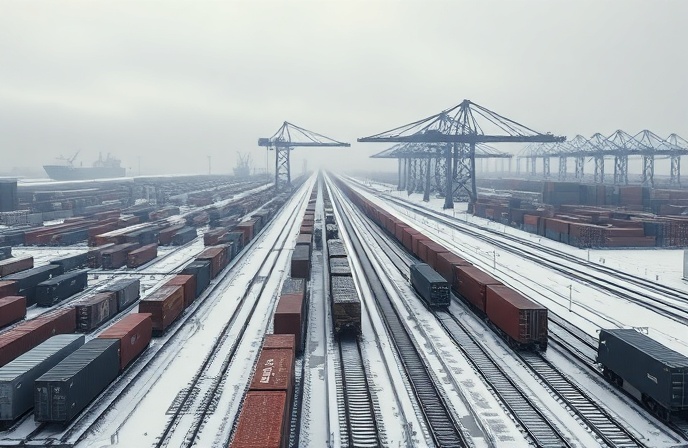Metro Manila Subway: Mitsubishi’s Crucial Role

This article delves into the significant contribution of Mitsubishi Corporation (MC) to the development of the Metro Manila Subway Project in the Philippines. This undertaking represents a substantial investment in the country’s infrastructure, aiming to modernize its public transportation system and alleviate the chronic traffic congestion plaguing Metro Manila. The project’s scope, funding, and technological implications will be examined, highlighting the challenges and opportunities presented by such large-scale infrastructure development in a rapidly growing urban environment. The analysis will focus on the role of MC in providing the integrated railway systems, the overall impact on the city’s transportation network, and the broader economic and social consequences of this ambitious project. The discussion will also consider the project’s significance within the context of the Philippines’ “Build, Build, Build” infrastructure plan and its reliance on Official Development Assistance (ODA) loans from the Japan International Cooperation Agency (JICA).
Mitsubishi Corporation’s Role in the Metro Manila Subway
Mitsubishi Corporation (MC) secured a substantial $1.2 billion contract from the Philippine Department of Transportation (DOTr) to supply and integrate the complete railway systems for a significant section of the Metro Manila Subway. This encompasses the design, manufacturing, installation, and commissioning of all necessary components for the subway line stretching from the East Valenzuela Station to the Terminal 3 Station, with an extension planned to Bicutan Station. This crucial role underscores MC’s expertise in delivering complex railway infrastructure projects on a global scale. The successful completion of this contract is essential for the timely launch of this critical transportation artery within Metro Manila.
The Metro Manila Subway Project: Addressing Urban Transportation Challenges
The 27-kilometer Metro Manila Subway, with its 15 proposed stations, represents a crucial step toward modernizing the Philippines’ public transport infrastructure. The existing road network in Metro Manila struggles to cope with the region’s high population density and rapid economic growth, resulting in severe traffic congestion and significant environmental pollution. The subway system is designed to directly address these issues by providing a high-capacity, efficient, and environmentally friendly alternative to road transport. This will lead to reduced travel times, lower greenhouse gas emissions, and a significant improvement in the overall quality of life for Metro Manila residents.
Funding and International Cooperation: JICA’s Role
The project’s financing is largely supported by a substantial Official Development Assistance (ODA) loan from the Japan International Cooperation Agency (JICA) under the Japanese government’s Special Terms for Economic Partnership (STEP) program. This significant financial contribution demonstrates the importance of international collaboration in addressing major infrastructure challenges in developing economies. The JICA loan, while providing crucial funding, also implies a degree of accountability and adherence to JICA’s standards and guidelines throughout the project’s lifecycle. This international partnership underscores the global nature of large-scale infrastructure projects and the need for effective coordination between international organizations and national governments.
The “Build, Build, Build” Initiative and National Development
The Metro Manila Subway is a key component of the Philippine government’s ambitious “Build, Build, Build” infrastructure program. This nationwide initiative aims to significantly upgrade the country’s infrastructure, stimulating economic growth and improving the lives of Filipino citizens. The subway project, therefore, is not merely a transportation project; it is a crucial element of a larger national development strategy. Its successful execution will serve as a significant benchmark for the efficacy of the “Build, Build, Build” program and its capacity to deliver large-scale infrastructure projects within the stipulated timeframe and budget. The success of this project will be a crucial indicator for future infrastructure investments in the country.
Conclusions
The Metro Manila Subway Project, with Mitsubishi Corporation’s substantial involvement, represents a significant stride towards enhancing the Philippines’ public transportation system and addressing its persistent traffic and environmental challenges. The project’s scale, relying heavily on JICA’s ODA loan, highlights the importance of international cooperation in financing and executing large-scale infrastructure initiatives in developing economies. The project’s integration within the Philippine government’s “Build, Build, Build” program underscores its strategic importance within the country’s broader economic and social development agenda. The successful completion of this project by 2028 will not only provide Metro Manila with a modern and efficient subway system but also serve as a testament to the ability of international collaboration to address critical infrastructure needs in rapidly developing urban environments. The project’s success will be measured not only by its timely completion and adherence to budget but also by its long-term impact on reducing traffic congestion, improving air quality, and enhancing the overall quality of life for millions of Metro Manila residents. The challenges associated with managing such a large-scale project, including potential delays, cost overruns, and logistical complexities, necessitate robust project management and ongoing collaboration between all stakeholders. The legacy of the Metro Manila Subway will extend far beyond its operational lifespan, shaping the future development of the city and serving as a model for future infrastructure endeavors in the region and beyond.


